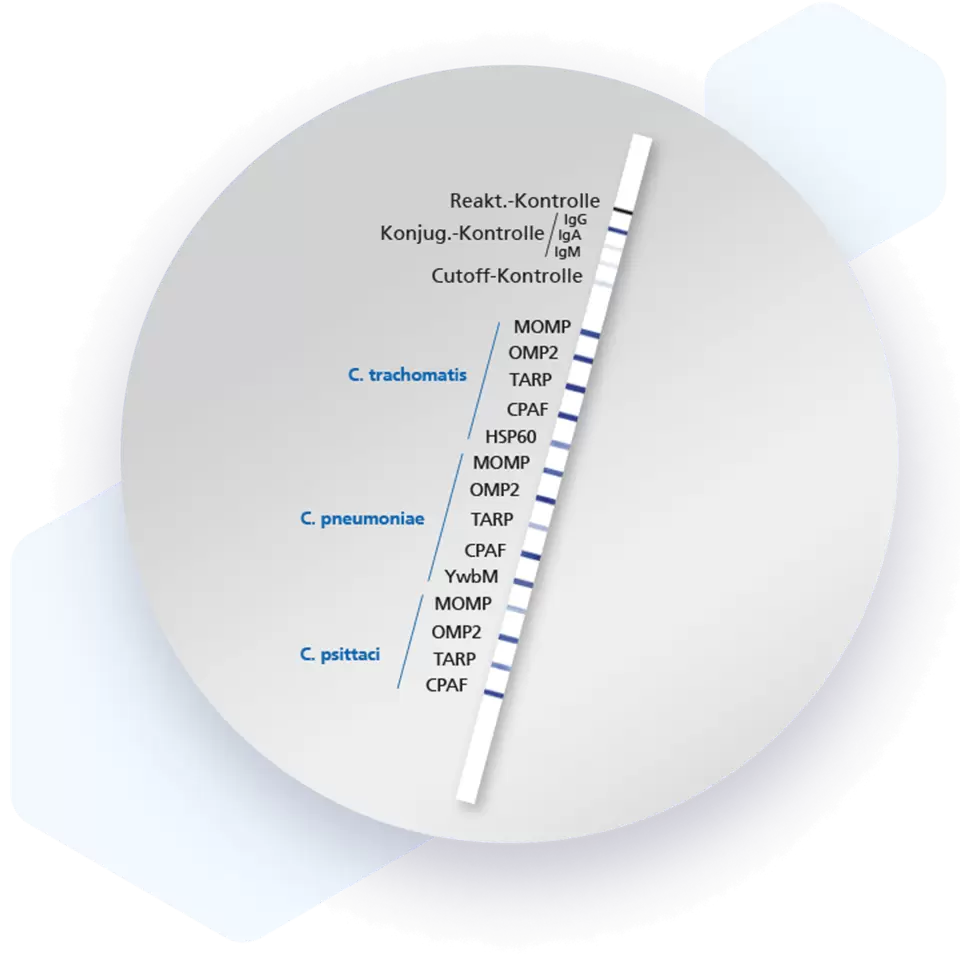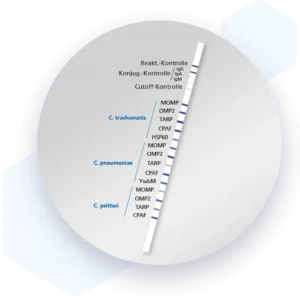| Weight | 1 lbs |
|---|---|
| Dimensions | 9 × 5 × 2 in |
| target | Human Chlamydia IgA (IgM) |
| species reactivity | Chlamydia (C. pneumoniae, C. trachomatis, C. psittaci) |
| applications | Lateral flow (dipstick) |
| assay type | Indirect & qualitative |
| available sizes | 20 test kits |
Human Chlamydia IgA/IgM Lateral flow dipstick kit 6173
$487.00
Summary
- Mikrogen diagnostik lateral flow device (dipstick) for research use (RUO)
- Human Chlamydia IgA/IgM Lateral flow dipstick kit 6173
- Suitable for IgA/M detection
- Ready-to-use
- 20 tests
Human Chlamydia IgA/IgM Lateral flow dipstick kit 6173
| kit | |||||||||||||||||||||||||||||||||||||||
|---|---|---|---|---|---|---|---|---|---|---|---|---|---|---|---|---|---|---|---|---|---|---|---|---|---|---|---|---|---|---|---|---|---|---|---|---|---|---|---|
| Assay type Sandwich assay, lateral flow (dipstick) | |||||||||||||||||||||||||||||||||||||||
| Research area Infectious Disease | |||||||||||||||||||||||||||||||||||||||
| Sample type Serum, plasma, whole blood | |||||||||||||||||||||||||||||||||||||||
Components
| |||||||||||||||||||||||||||||||||||||||
| Storage Store at 2-8°C. | |||||||||||||||||||||||||||||||||||||||
| Additional information Mikrogen recomLine Chlamydia tests are serological, qualitative in vitro tests that allow the determination of the immune response of all three human pathogenic Chlamydia species in a single assay. They consist of different species-specific, recombinantly produced antigens on nitrocellulose strips that can be used to determine IgG, IgA, and IgM antibodies against immunodominant C. trachomatis, C. pneumoniae, and C. psittaci antigens. The recomLine Chlamydia can be used as a confirmatory test but also as a screening test. Advantages
DataPublicationsWarning: Cannot modify header information - headers already sent by (output started at /www/benchmarkantibodiescom_769/public/wp-includes/script-loader.php:3015) in /www/benchmarkantibodiescom_769/public/wp-content/plugins/shortcode-manager/shortcode-manager.php(453) : eval()'d code on line 3 Publications
Protocols
Documents
Only logged in customers who have purchased this product may leave a review. | |||||||||||||||||||||||||||||||||||||||















Reviews
There are no reviews yet.